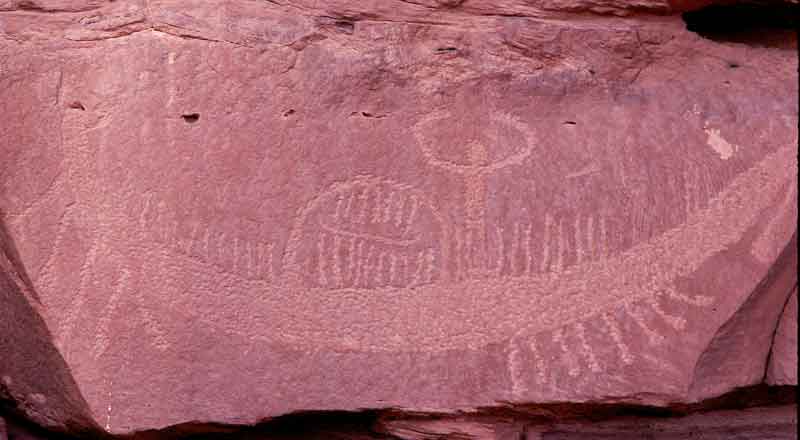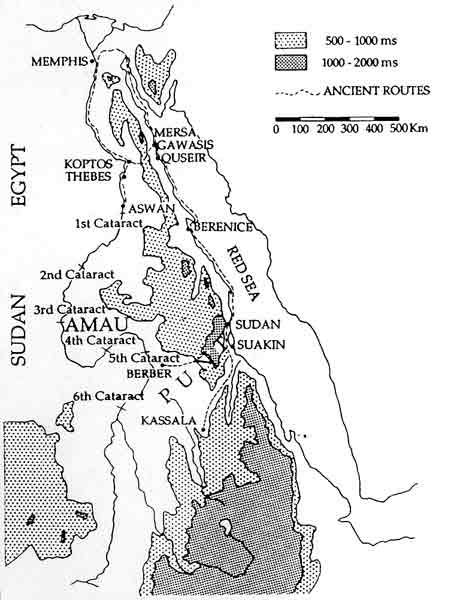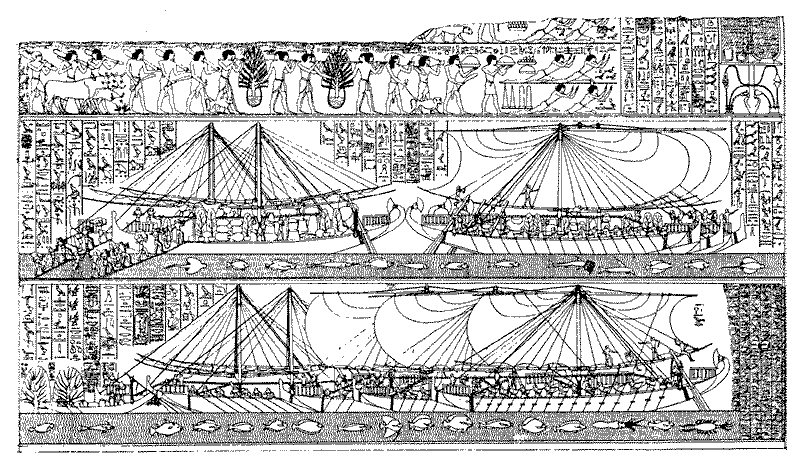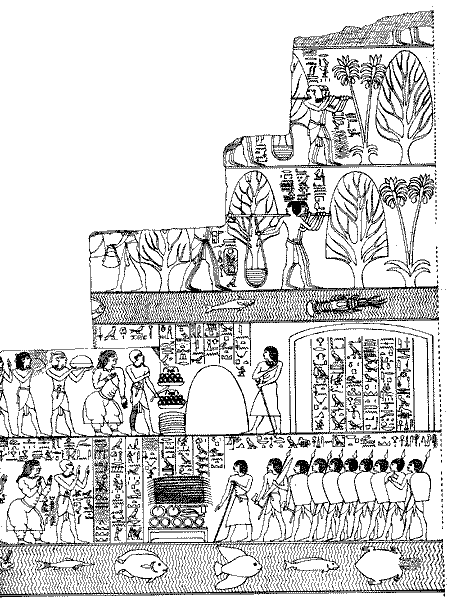The Archaeology Fund
Egypt and Punt
|
Stories/Myths originating about lands to the south of Egypt along the Red Sea most likely began by late Predynastic times (ca. 3500 B.C.) since we have excavated Red Sea goods (coral, shell, obsidian, incense, and lapis lazuli) in Upper Egyptian Pre-Dynastic tombs. Predynastic ship depictions along traditional Upper Egyptian Eastern Desert routes from the Nile to the Red Sea support such an idea. The actual hieroglyphic mention of Punt/Pwenet also known as “God’s Land” however begins in the Fifth Dynasty (ca. 2250 B.C. Sahure) and remains a popular concept throughout Pharaonic Egypt. Scholars have long debated the location of “Punt” and most authorities now suggest a southern Red Horn of Africa location. Goods however which were traded/sold through Red Sea emporia must have not only come from both sides of the Red Sea but even further afield as was the case in Classical period accounts of Red Sea trade. Zatshepsut’s funerary monument in Upper Egypt at Deir el Bahri records her expedition to Punt and the large number of scenes depict her ships arriving, being received by local dignitaries, goods being loaded on shipboard and departure. Note the artists’ rendition of Red Sea life including fish, rays, lobsters, cuttlefish etc. The local people are shown living in round houses set on stilts. Its possible that a seaport such as Adulis was being depicted. Thutmosis III account of gifts such as incense being received mentions Red Sea middlemen (GNBTYW) facilitating the trade. This term hase been interpreted as an early form of the Classical Qatabanians from southern Arabia. A M.K. inscription from Wadi Hammamat itself called the Henu inscription describes preparations for sailing south. More recently, actual remains of M.K. preparations for sailing to Punt were found just south of Safaga. These included textual fragments and a number of anchors inscribed with dedications from returning voyagers The most popular account of Red Sea trade belongs to a Middle Kingdom story called “The Shipwrecked Sailor”. Our tale begins with 120 men on a 200ft. vessel. A huge storm arises and all but one of the men drown. Our hero is shipwrecked on a desert island rich in food when suddenly a 50 foot serpent appears. The magnificent creature with a beard and lapis lazuli eyebrows tells our hero that he will spend four months on the island. The snake, ruler of Punt, recounts all manner of incense, oils, and exotic goods coming from the region. Once the Egyptian ship arrives the snake on loads oils, perfumes, spices, ivory, giraffe tails, frankincense, myrrh, indigo?, dogs and apes. Our hero departs for home on a two month journey. ((see Erman, A. ZAS 43 (l906) 1-26; Blackmn, 1932 MK stiroes, Gardiner, ZAS 45 (l908). Miriam accunt recent. This tale mirrors the archaeological, inscriptional, and artistic evidence outlined above. Where was the sailor shipwrecked? Virtually no islands in the Red Sea have been investigated archaeologically. Our work on the Farasan Islands documented Bronze Age middens perhaps as part of the larger Subr-Sihi complex now known from the Southern Red Sea. The adjoining Dahlac islands have also been cursorily examined but little is known of Bronze Age materials. |
|






